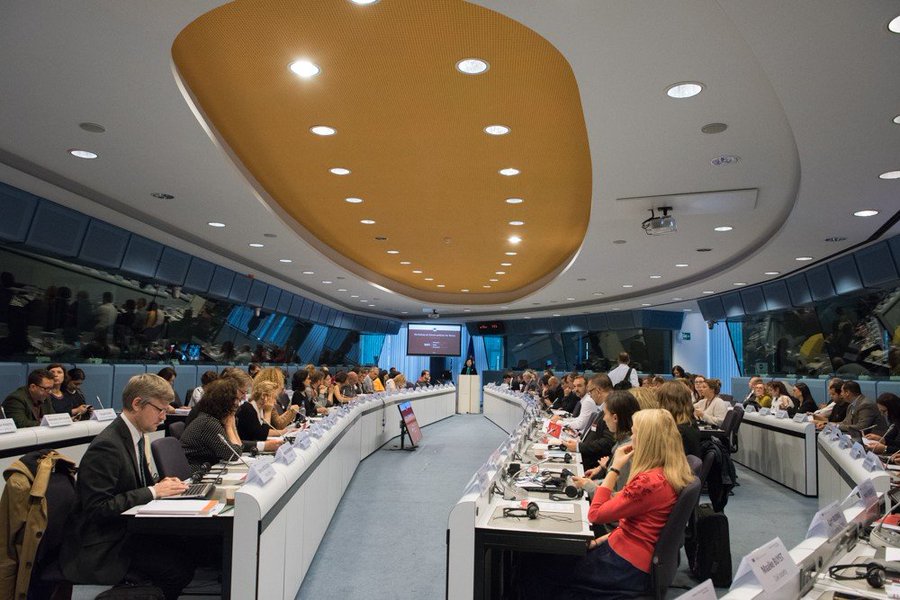The Roma in Europe [editar]
Social situation of the Roma population in Europe
Today, the Roma are scattered across the globe. Between 10 and 12 million live in Europe, still facing serious inequalities in areas that are very important for achieving social inclusion.

According to the latest survey in 2021 by the EU Agency for Fundamental Rights (FRA), there has been modest progress in most areas analyzed (compared to the previous data available from 2016), except in education, where the data has stagnated. More than 70% of young Roma leave school early, and only 27% of those aged 20 to 24 have completed upper secondary education. Early childhood education is also limited, with only 44% of Roma children accessing this level of education. In addition, one in five Roma children has experienced hate-motivated bullying at school, highlighting the barriers that still exist in accessing quality and inclusive education.
Employment rates among the Roma population remain low. Only 43% of the Roma aged 20 to 64 are in salaried employment, and 56% of young people are not in education, training, or employment. Furthermore, discrimination remains a significant obstacle, with 33% of the Roma over the age of 16 reporting that they have been discriminated against when looking for work in the last 12 months.
Housing is another area where inequalities are most visible. More than half of the Roma population (52%) lives in deprived conditions, in damp, dark housing or without access to adequate sanitation facilities. Eighty-two percent live in overcrowded homes and 22% do not have running water inside their homes. This situation particularly affects children, as 55% of Roma children live in deprived housing conditions, 94% in overcrowded homes, and 24% without access to drinking water at home. Another serious issue that requires attention is the residential segregation of the Roma in Europe, which directly violates human rights. Furthermore, there is not enough data to assess the extent of this issue and address it effectively.
Roma women face intersectional discrimination that affects various areas, but is most evident in employment: only 28% of Roma women in Europe are employed, compared to 58% of Roma men, and women who do not study, train, or work outnumber men by 25 percentage points (69% compared to 44%).
In addition, 25% of the Roma has experienced discrimination in key areas such as employment, education, health, or access to public and private services in the last year. Hostility towards the Roma community remains a reality, with 17% of respondents reporting that they have suffered hate-motivated harassment.
Finally, child poverty is one of the most alarming situations. Eighty-three percent of Roma children are at risk of poverty, and more than half (54%) live in households with severe material deprivation.
EU policies for the Roma
The inclusion and equality of the Roma population in Europe became a concern for the EU in 2010 with the launch of the EU Framework for Roma Inclusion 2011-2020. For the first time, a common framework was established for the development of measures and policies at the national level based on approaches, objectives, and areas of work shared by all EU Member States. With this framework, the inclusion of the Roma reached the top of the European political agenda.
Despite the undoubted step forward represented by the first European framework for the inclusion of the Roma population in the EU, the reality is that it had a very limited impact on the living conditions of the Roma population. After a long process of evaluation and consultation with different stakeholders, in 2020 the European Commission launched a new proposal for the next ten years, with the aim of addressing the critical situation of the Roma population in Europe: the new European Strategic Framework for Roma Equality, Inclusion, and Participation 2020-2030, which set more ambitious goals.
The new framework aims to address inequality among the Roma population in the EU by focusing on equality, inclusion, and participation as horizontal and measurable objectives. Combating prejudice and fighting antigypsyism and discrimination explicitly and as primary objectives are new features of this new framework. Education, employment, health, and housing remain key areas, but the new framework adds three essential objectives: effective equality for the Roma population, meaningful participation, and socioeconomic inclusion to combat the persistent poverty rates among the Roma population in the Union. Through these new objectives, greater recognition and importance is given to the existence of antigypsyism as a specific form of structural racism.
Each country in the European Union creates its own strategic framework and plans for the inclusion of the Roma population and the use of European funds to combat antigypsyism and improve their quality of life.
The European Commission carries out mid-term evaluations that measure the progress of these national plans and provide recommendations for advancing toward the objectives set out in the European strategy.


